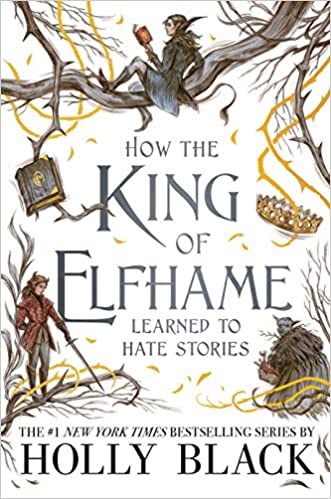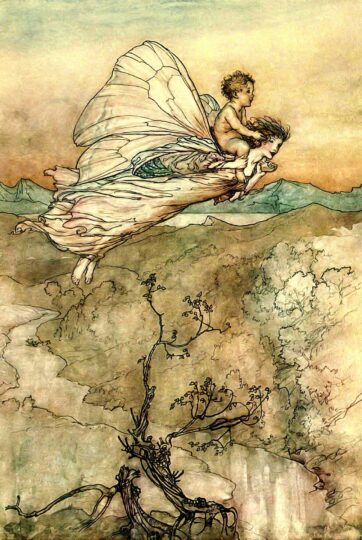 Prince Cardan’s Childhood
Prince Cardan’s Childhood
Author: Holly Black
In the in-between land while fans processed the conclusion of The Queen of Nothing and prepared for The Stolen Air and Oak’s supposed rise to the throne, this little illustrated fairytale came along. Here, we shift the focus away from Jude’s complicated rise to power and love him/hate him lust for Cardan to concentrate on the flawed faerie prince himself. Told from his prospective, this slim tome highlights key moments in Cardan’s life and his liminal status, stuck between coldly evil price and something softer, something more sympathetic that survived the courts and his elder brother’s carefully planned abuse. In between these snippets, we follow Cardan from his childhood all the way to present day, with Jude and Cardan married and following a quest in the mortal world. And through it all is the common thread of Aslog. Aslog is a hideous troll woman with sharp teeth and a penchant for wisdom hidden in violent stories. As the years progress, her story weaves into Cardan’s growth as both a young man and a villain. In the end, it is Aslog’s blood thirsty narrative with a moral and a honed, sharp edge that helps Cardan understand himself, what he has become, and ultimately make peace with it.
How The King of Elfhame Learned to Hate Stories is beautiful, both for the artwork and the narrative. This is a book that has to be seen just as much as the stories have to be read. Rovina Cai, the illustrator, captures a child’s sense of wonder, drawing these sensuous and often amoral characters as though they had emerged from our beloved childhood books, where the horrifying reality of cannibal witches in beautiful houses of candy was a delicious, deadly staple. The visual portion of this book captures that beginning love of narrative and the nature of storytelling that captivated many of us from an early age and made fairy tales a lifelong, grimly satisfying love.
The stories themselves are more episodic and admittedly too short for the range and depth of emotions and character evolution they are following. If you aren’t already familiar with Cardan and Jude and the figures who surround them, including Cardan’s duplicitous mermaid/undersea princess love, you won’t be able to follow the revelations and subtleties here. The stories rely on everything else you already know or have intuited and as such have a quality in their simplicity, but come on. This is Holly Black, an author who defines multifaceted characters and hidden motives. While her cadence and depth is still echoed here, it is just that: an echo, not the usual clarion call. I want more. I need more. Each of these episodes could be elongated and expanded, and that would just make the dedicated and drunkenly obsessed readers even happier. As it is, this is the diet coke of a story: just enough to make you crave (and remember) the real thing.
That being said, it’s still quality, even though it is the abbreviated, cliff-notes version. It suffices to give us a deeper glimpse into one of our fictional bad-boy crushes. Aslog’s evolving story is a wonderful frame, a true Holly Black moment of inspired story crafting.
While I would have loved – while I NEEDED more – How The King of Elfhame Learned to Hate Stories is another wonderful addition to the Folk of the Air series and a worthy addition to my groaning shelves.
– Frances Carden
Follow my reviews on Twitter at: https://twitter.com/xombie_mistress
Follow my reviews on Facebook at: https://www.facebook.com/FrancesReviews
- Book Vs Movie: The Shining - April 6, 2020
- Thankful For Great Cozy Mysteries - December 13, 2019
- Cozy Mysteries for a Perfect Fall - October 20, 2019



